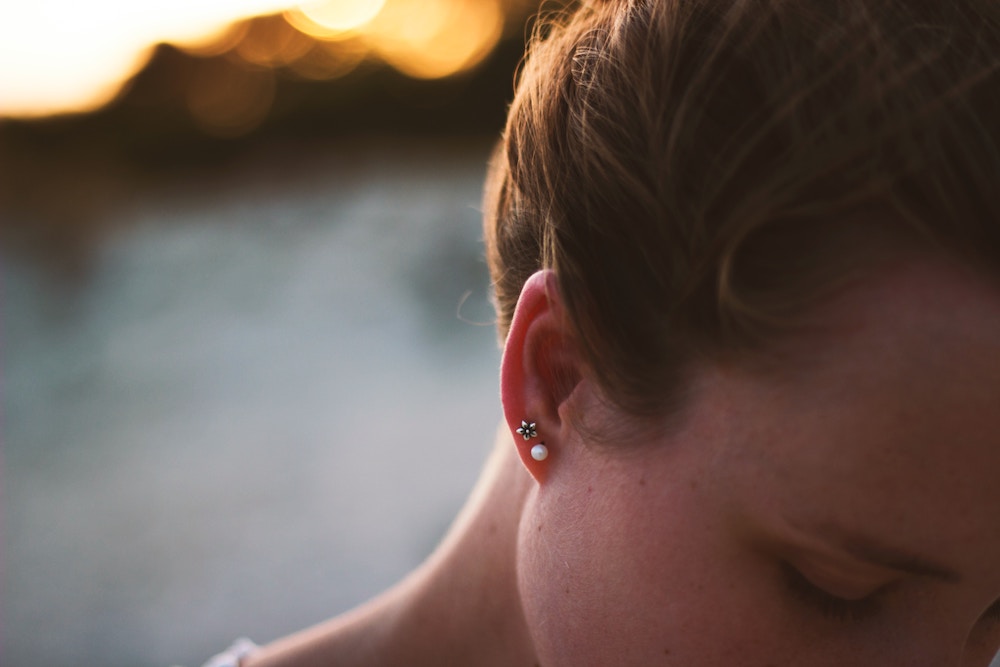4 Common Piercing Myths and the Truth Behind Them August 2, 2021 – Posted in: Informative, Piercing Advice – Tags: aftercare myths, keloids, piercing aftercare best practices, piercing infections, tea tree oil
Common piercing myths highlights:
- Don’t believe everything you read online; your best bet is always to visit your piercer with questions.
- Piercing aftercare saline solution is the only product you should use on your piercing as it heals.
- If you start to form a piercing bump, it’s almost certainly not a keloid.
The internet is a pretty cool place. It provides us access to endless information in just seconds. Questions that might have taken hours to research ten years ago can now be answered on a whim.
The downside to this is that anyone can post anything online, leading to tons of misinformation. The piercing community, especially, sees quite a bit of false information floating around. We’re here to clear some of that up.
Here are some common piercing myths and the truth behind them.

Photo by Daniel Höhe on Unsplash
Myth #1: Tea tree oil is safe to use on healing piercings
Tea tree oil is an essential oil that has some antibacterial and anti-inflammatory properties. This has led people to believe that it is safe to use on a healing piercing.
Unfortunately, tea tree oil also dries out the skin. In a healing piercing, this can cause complications because the skin around your piercing is already delicate; putting a harmful substance around the piercing is the last thing that you want to do.
A piercing aftercare saline solution is the only product you should put on your healing piercing. You should even stay away from using lotions, soaps, and other products that may have irritating chemicals.
Some have said that tea tree oil can be used to treat piercing bumps in a healed piercing. This may or may not be true—there’s not much research to say either way—but if your piercing has fully healed, and a piercer has confirmed this, then it may be safe to try diluted tea tree oil. However, you should first seek the advice of a piercing professional before trying your own methods at home.
Myth #2: Keloids are the same thing as piercing bumps
We see the term “keloid” thrown around quite a bit in the piercing world. The term seems to be synonymous with piercing bumps. However, keloids are very different from piercing bumps, and it’s best that you stay away from this term when referring to the small bumps that appear around your piercing.
Keloids are an incredibly rare condition that’s actually quite serious. Those who suffer from keloids see massive growths surrounding any minor wound they might receive, including small scratches or bug bites. These growths are large, discolored, and often require surgery or other extreme measures to remove them.
Referring to the small bump next to your piercing as a keloid is much like saying you have a terrible wound when you’re suffering from a minor paper cut. Piercing bumps might be annoying, but they often go away on their own. Those who suffer from keloids aren’t so lucky.
Myth #3: Piercing infections are common
We keep our healing piercings clean to avoid infection, so it would seem as though infections are something that occur quite frequently, right?
Actually, true piercing infections are pretty rare compared to the number of piercings conducted each year. You have to seriously neglect your piercing and make some really bad choices for your piercing to get infected.
The reason why we tend to believe that piercing infections are common is that infections share symptoms with other issues, and sometimes it’s easy to confuse natural healing—like swelling or light discharge—as an infection. We also see a lot of posts from doctors claiming that they see piercing infections all the time, but there’s a bit of bias here. The only times that they see piercings is when they’ve gotten pretty bad. You’re not going to visit your doctor to take a look at a healthy piercing.
If your piercing starts seeing excessive discharge, swelling, or bleeding, then it is a good idea to see your piercer or your doctor. However, in a piercing infection, these symptoms are quite severe, and they’ll appear rapidly. If you feel only minor discomfort, it’s likely not a piercing infection.
Read our guide on piercing infections here.

Photo by Mikail Duran on Unsplash
Myth #4: You should rotate your jewelry as your piercing heals
If you got your ears pierced years ago, then your piercer may have given you this piece of advice. Back then, it was believed that rotating your jewelry aided in healing by breaking away crusties and ensuring that the skin wouldn’t grow onto the jewelry.
This has since been proven to be a damaging practice. Your skin won’t grow onto the jewelry, and constantly moving the jewelry within your piercing damages the skin which encourages piercing complications.
Instead, you should leave the jewelry alone as much as possible. To avoid a buildup of crusties, you can gently dab at it with a piece of non-woven gauze soaked in saline solution until the crusties wash away on their own.
It’s convenient that there’s so much information about piercings available online, but you always have to be careful about what you read. The best thing that you can do for your piercing is to find a reputable piercer and adhere to their aftercare strategies.
If you experience an issue with your piercing, your (reputable) piercer will be happy to take a look. Everyone heals differently, so it will be nearly impossible for you to self-diagnose your issue based on information that you find online. You’ll need the expert eye of your piercer, and they will guide your treatment from there.







